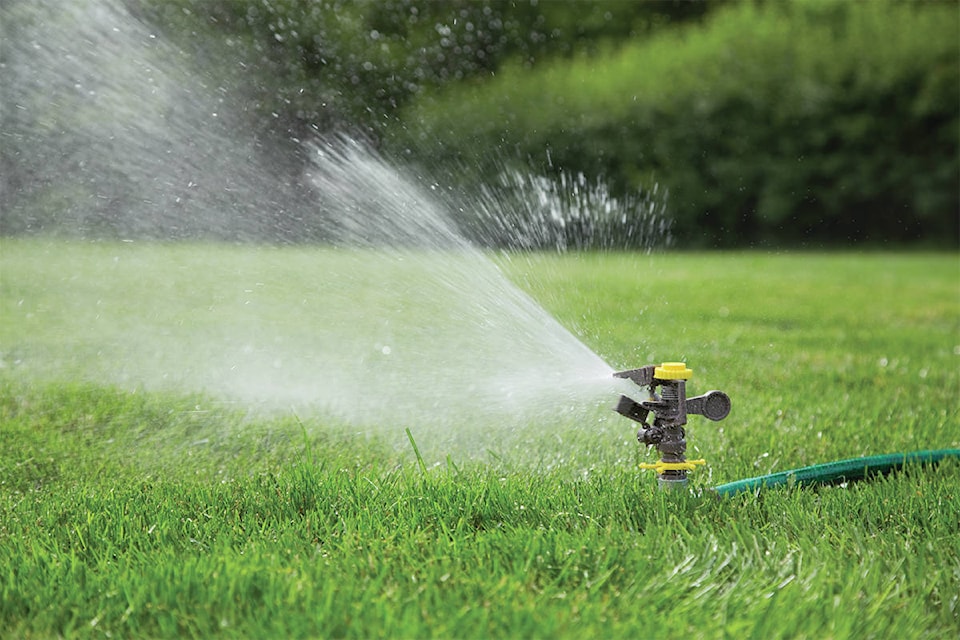How much water you use in the summer seems to be the main determining factor as to whether your bill will go up or not under the City of Castlegar’s proposed water and sewer rates for 2018.
The proposed rate system uses both a flat rate and a consumption charge and uses the principle that those who use more should pay more.
The Castlegar News asked readers to share their water usage information with us so we could test out the city’s new rate calculator (available at castlegar.ca/waterandsewer) and look at determining factors for those with rate increases.
When looking at the single-family-residential samples submitted to us in terms of rate increases, it does not really seem to matter if you have a family of four or are a family of two senior citizens — it boils down to summer water usage.
Increases in the samples we looked at ranged from $60 to $375 annually. One sample had a decrease of $21.
“The new water and sewer rates look to set equality across single-family-dwelling users by having a user-pay component especially during the summer months — the more you use, the more you pay,” explained Castlegar CAO Chris Barlow.
One of the reasons water metres were introduced in the city is because Castlegar has a much higher usage rate than provincial and national averages and the city hopes the user-pay component will help promote conservation.
“If you look to conserve water, you can save money,” added Barlow.
A look at the rates
The proposed flat rate is $360 for water and $288 for sewer for a total of $648 compared to the 2017 flat rate of $760.
The consumption rate is based on water usage. For water, there is no additional charge for usage under 30 cubic meters, but excesses will be charged $.68 per cu/m over the first 30.
For sewer, all usage is charged at $.38 per cu/m but capped at 30 cu/m in summer (May to September), reflecting that a lot of summer water usage does not end up in the sewer system, but rather is being used outdoors.
A look at usage
According to city statistics, the average Castlegar household only uses 11 to 13 cu/m of water for the months of January, February, March, April, October, November and December.
Average usage for May (27), June (30) and September (23) is still under the 30 cu/m threshold.
The months of July and August are where you see the biggest jumps at 35 and 60 cu/m respectively.
Some of the samples that Castlegar News looked at had much higher jumps — several had usage over 200 cu/m during those months and one used almost 300 cu/m. But the middle ground was around the 75 cu/m mark.
Anytime you hit the 30 cu/m mark, you will begin paying water usage fees and the more you use, the more you pay. In order to keep your rates at 2017 levels, you would need to ensure that your total cu/m overages for the year were only an extra 35 cu/m. For example, you would need to keep July and August each at 45 cu/m and September at 35 cu/m.
Keeping July and August each at 50 cu/m and September at 40 cu/m and the rest of the year at city averages would give you a rate increase of $11.
“I have talked with several residents who are concerned about their high water use in July and August and how it will affect their bill,” said Barlow.
He encourages those who are concerned to use the online calculator and find out for sure what they are looking at.
“They now have the knowledge if they truly are high users,” said Barlow. “If so, they have the ability to prepare and adjust their water use during those peak times and save themselves and the city money.
“There are many outdoor and indoor conservation tips on the internet, the city’s webpage and through the city’s water ambassador,” he added.
Barlow said that yard and irrigation assessments will be available again next spring and summer and encourages that they can be an effective technique to reducing summer water use.
What is one cubic meter of water?
One cubic meter of water is the equivalent of running a hose for two hours, 10 baths, 10 washing machine loads, 100 toilet flushes, 30 showers or 4,000 cups of tea. So for single-family residential customers who have reached their 30 cu/m limit, each of those tasks will cost you an additional $1.06 for the combined water and sewer use.
Residential versus commercial
The other inequality the city is hoping to address with the new rate structures is that of a disparity between residential and commercial users.
“With respect to equality, the new rates look to adjust several imbalances,” said Barlow, “the first being the difference between what multi-family and industrial, commercial and institutional (ICI) customers pay in comparison to single family dwelling customers.
“Historically, single-family dwellings have paid a higher percentage of the overall water and sewer utility costs as compared to their use and cost of service. The new rates are designed to make the change across all users over a three-year period to allow multifamily and ICI users time to adjust.”
A feedback survey can be found at surveymonkey.com/r/Castlegarwaterandsewer.
